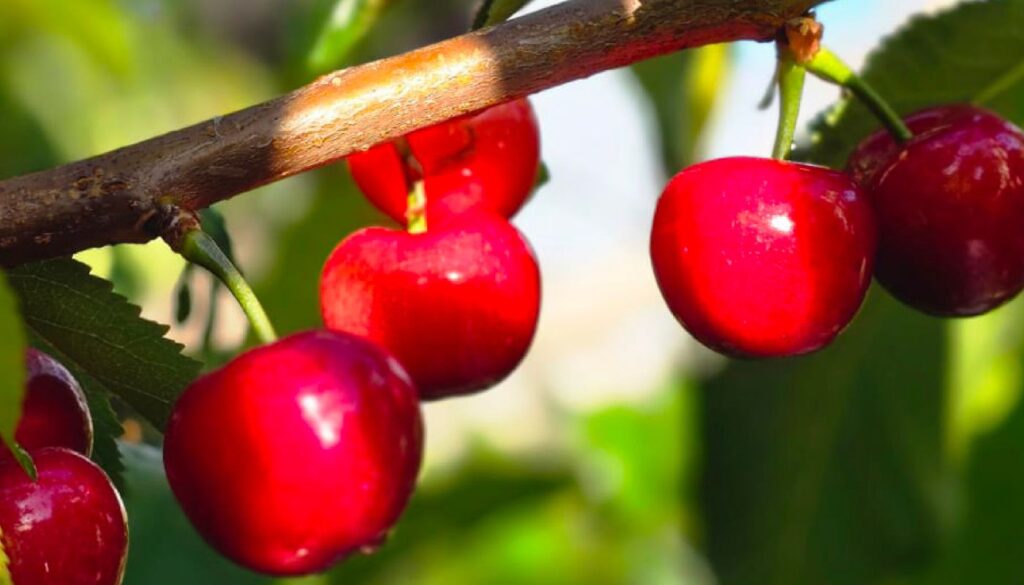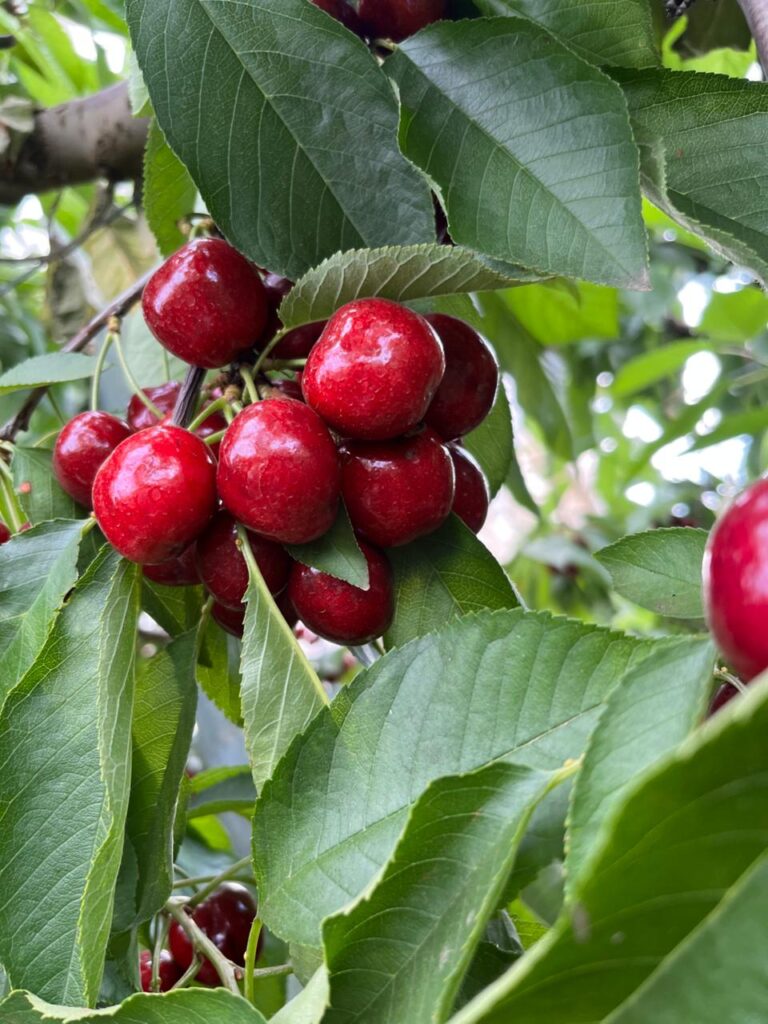This week we begin March, a month of utmost importance in cherry production, since it is precisely in this month that we should stop doing some work and begin to dose or limit others; this is because March is the prelude to the dormant period, in which our orchards must prepare for “their rest” and also prepare for a new productive stage.
Among the tasks that we must begin to regulate, irrigation is the main one; the idea is not to stop watering abruptly, but rather to begin to gradually reduce it so that at the end of March the water is “cut” at 100%, and in this way give a concrete signal to our orchard for its leaf fall and subsequent entry into recess; that will be a direct signal given by us, since the other signal received naturally and that will start the dormant period in cherry trees, was the decrease in effective light hours or shortening of the photoperiod from the end of December.
The decrease or in some cases the cessation of vegetative growth is a clear sign of this process, in which the lignification of the annual shoots and fruit centers begins; for this to occur correctly, we must consider and remember the following:
- In March we should stop foliar fertilization, the last thing should have been done in February.
- In February we should have also applied the last fertilization to the soil.
- In the month of March we must stop watering.
- In short, in March we prepare and observe the orchard to evaluate later (in April), make applications to lignify wood or poison leaves to accelerate their fall, and start correctly in May with the accumulation of cold.
Molibo® It is a Fervalle product from Spain and distributed in Chile by Vadpagro, which contains a high concentration of molybdenum (Mo) (11% w/w), and Boron (B) (11% w/w); Molybdenum is an essential micronutrient for the growth and development of plants. In the specific case of cherry trees, molybdenum can help control the vigor and the entry into dormancy of the trees.
Its objective is the translocation of sugars to form reserves in pre-dormancy, as well as lignification of wood and buds to better cope with possible frosts during the dormant period. Molibo's technical recommendation® In cherry trees it is only 2 applications, both of 1 Kg. / Ha., starting the first application from mid-March in early areas and varieties and 15 to 20 days later the second application, with the same dose and at the lowest cost per hectare in the Chilean market.

During the last few seasons, especially the 2022-2023 season, we have had unusually high temperatures in the months of March-April, which causes the cherry tree not to properly begin its dormancy.
Molibo® It is a key tool to promote the entry into dormancy of our cherry trees. It is mainly used to promote entry into dormancy.
Dormancy is a natural physiological process that occurs in autumn, during which trees stop growing and build up reserves for the winter. Adequate dormancy is important for trees to withstand low winter temperatures and to prepare them for the next growing season.
Foliar applications of Molybdenum during postharvest have proven effective in promoting dormancy in cherry trees. Molybdenum helps trees synthesize lignin, a compound that strengthens wood and makes it more resistant to cold. It also helps trees accumulate arginine, carbohydrates and other nutritional elements.
And how does it work?
Molybdenum is an important component of several enzymes that are involved in carbohydrate metabolism, protein synthesis and nitrate reduction. In the specific case of dormancy in cherry trees, molybdenum can act in several ways:
- Promotes the accumulation of sugars: Molybdenum participates in the enzyme invertase, which is responsible for the hydrolysis of sucrose into fructose and glucose. This leads to an increase in the concentration of sugars in the tissues of cherry trees, which is essential for the induction of dormancy (as part of the cofactor Moco).
- Stimulates protein synthesis: Molybdenum is also necessary for the synthesis of proteins, which are important components for cherries.
- Promotes the action of the nitrate reductase enzyme responsible for regulating nitrogen metabolism within the crop.
- Application recommendation: It is suggested to apply from mid-March, 2 applications every 15 to 20 days, depending on the variety, area and technical objectives of the application.
The main benefits of using Molibo in preparation for entering dormancy are summarized below.
- Promotes trees to go dormant.
- It strengthens the wood and makes it more resistant to the cold.
- It helps trees to accumulate carbohydrates.
- It can improve the productivity of trees in the next season.
Molibo®It is a product that delivers excellent benefits and results with few applications, in the case of cherry trees only two applications, and at the lowest cost per hectare in the Chilean market.










